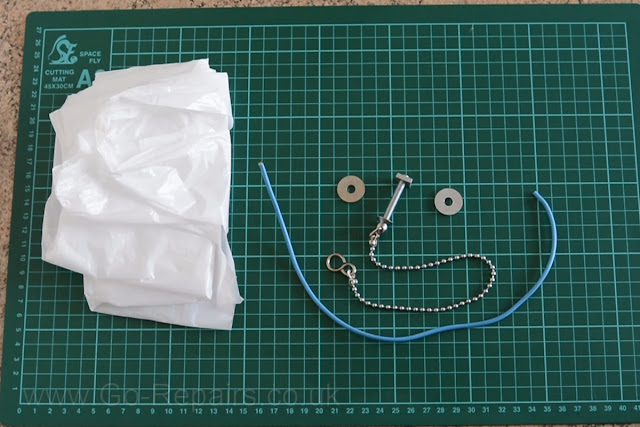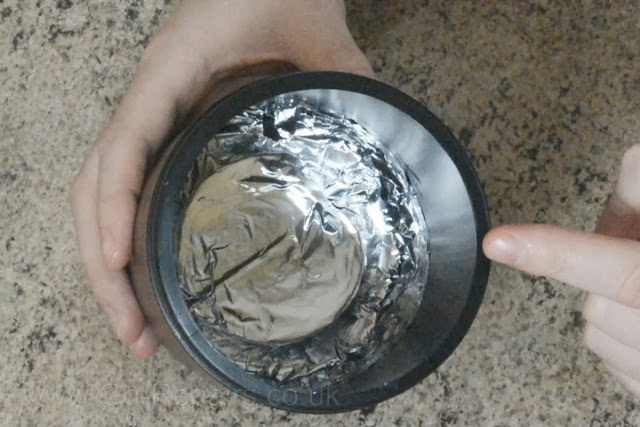Make A Capacitor From A Hand Wipe Tub
There comes a time in every mad scientist's life when their invention will require capacitors. They have to look cool, show off how inventive you are and pay homage to earlier inventors. Shop bought capacitors just won't cut the mustard. No, you need Leyden jars.List of materials:
- A plastic hand wipe jar
- Aluminium foil
- Glue
- PVC pipe
- A plug chain
- Metal washers
- A piece of wire
- A plastic shopping bag
Base Plate
Firstly make sure your container is clean and free of labels.
Cut one circular piece of Aluminium, slightly wider than the diameter
of your container. I used a bowl because it was big enough for my needs.
Cut slits around the edge of the circular Aluminium piece, these are so
you can overlap them. When you've done cutting your foil it should look
like a flower head with petals. Curl the petals of the Aluminium until
it looks a bit like a bowl. Now glue the base section in place, making
sure you go partway up the wall.
Inner and Outer Walls
Now measure and cut two rectangular sheets of
Aluminium, big enough to wrap inside and outside of your container,
these should slightly overlap. Then you can put the Aluminium on the
inner and outer walls and glue them into place. Ensure your inner wall
connection overlaps the base section. Also make sure your Aluminium foil
is nice and flat against the surfaces, remove any air pockets where
necessary.
Making the Top Contact
Next we need to suspend a metal contact
through the lid, so it touches the inner Aluminium. For this I'm using
the chain from a sink plug, suspended from the existing hole. Put your
metal washers on so they sandwich the lid of the container and lastly
tighten your nut - this only needs to be hand tight.
Now your jar is ready it's time to charge it. For that we are going to
make what we're calling a power rod, this will both charge and discharge
our capacitor. We start by cutting a length of PVC pipe, we also cut a
piece of insulated wire and strip the ends. Now make a hole right
through the pipe big enough to fit the wire through at one of the ends
and thread the wire through the hole.
If you want to secure the wire you could put a blob of silicone on the inside of the pipe over the wire, but it's not really necessary.
If you want to secure the wire you could put a blob of silicone on the inside of the pipe over the wire, but it's not really necessary.
Charging and Discharging the Capacitor
Now your hand wipe capacitor and power rod are complete, we can give it a
quick test. Turn your rod around and start to rub it, I've found that a
piece of shopping bag works great. If your rub your rod against the
hairs of your arm you should notice they stand up.
Start by rubbing your rod until you hear the static crackle in the bag. Then run your rod past the metal bolt at the top. You’ll hear the static charge transfer from the rod to the bolt. If you feed the rod through the bag as I’m showing it should speed up your charge time.
When your ready, touch one end of your wire to the outside foil and use the other end to touch the bolt through the lid. Depending on how long you charged the jar will determine how impressive the spark will be. If it was very weak then charge it for longer.
Start by rubbing your rod until you hear the static crackle in the bag. Then run your rod past the metal bolt at the top. You’ll hear the static charge transfer from the rod to the bolt. If you feed the rod through the bag as I’m showing it should speed up your charge time.
When your ready, touch one end of your wire to the outside foil and use the other end to touch the bolt through the lid. Depending on how long you charged the jar will determine how impressive the spark will be. If it was very weak then charge it for longer.
To see the full article visit our main site.



















No comments:
Post a Comment